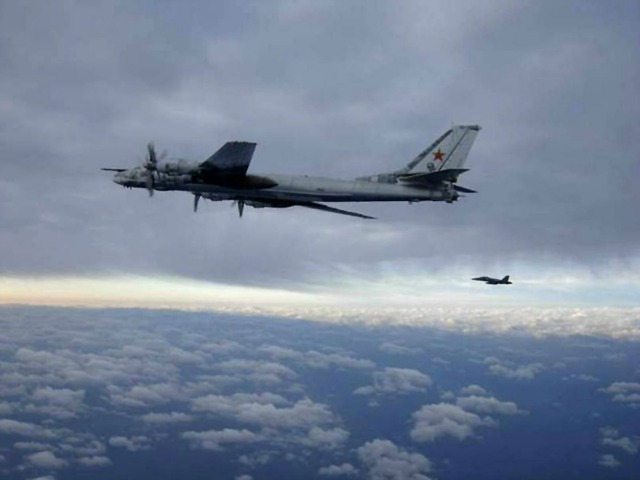The Associated Press reported Monday that Gen. Herbert Carlisle, Commander of United States Air Forces in the Pacific, acknowledged a significant increase in the activities by Russian long-range strategic aircraft flying along the California coast.
There was no comment about whether the aircraft were nuclear capable, but it has not been since the Cold War ended in the early 1990s that Russian patrols have skirted the West Coast and California.
Gen. Herbert J. “Hawk” Carlisle is the Commander of Pacific Air Forces; Air Component Commander for U.S. Pacific Command; and Executive Director, Pacific Air Combat Operations Staff, Joint Base Pearl Harbor-Hickam, Hawaii. As the PACAF, he is responsible for Air Force activities spread over half the globe in a command that supports 45,000 Airmen serving principally in Japan, Korea, Hawaii, Alaska and Guam.
Speaking Monday, May 5th at the Center for Strategic and International Studies, a bipartisan Washington DC think tank, General Carlisle said there had been long-range Russian air patrols to the coast of California and a circumnavigation of the U.S. Pacific territory of Guam. He noted that a U.S. F-15 fighter jet intercepted a Russian strategic bomber that had flown to Guam.
General Carlisle linked the increased activity and incursions to the situation in the Ukraine. He said Russia was demonstrating its capabilities and gathering intelligence on U.S. military exercises.
He further admitted that there has been a sharp increase in Russian air patrols around Japanese islands and Korea. General Carlisle added that there was more Russian ship activity in the area, too.
Last week Breitbart News reported that reported that the Dutch Air Force had scrambled two F-16s to intercept a pair of Russian Bear strategic bombers approaching Dutch airspace from the North Sea. The Russian nuclear-capable bomber provocations seemed to be an effort to strain the NATO air forces, which have organized under a joint security arrangement for over 125 extra planes to patrol airspace over the Baltic States and near the Ukraine border.
The California incursions may also have involved Tupolev Tu-95 Bear Bombers, which were the Soviet Union’s first intercontinental strategic bomber. Because of its distinctively swept-back wings and four turbo-fan engines that each drives two contra-rotating propellers, the plane is one of the noisiest military aircraft on the planet.
By sending patrols to the European and California coasts, the Russians must have wanted their intrusions to be visible on every radar site in the region to generate the greatest possible amount of media awareness.

COMMENTS
Please let us know if you're having issues with commenting.